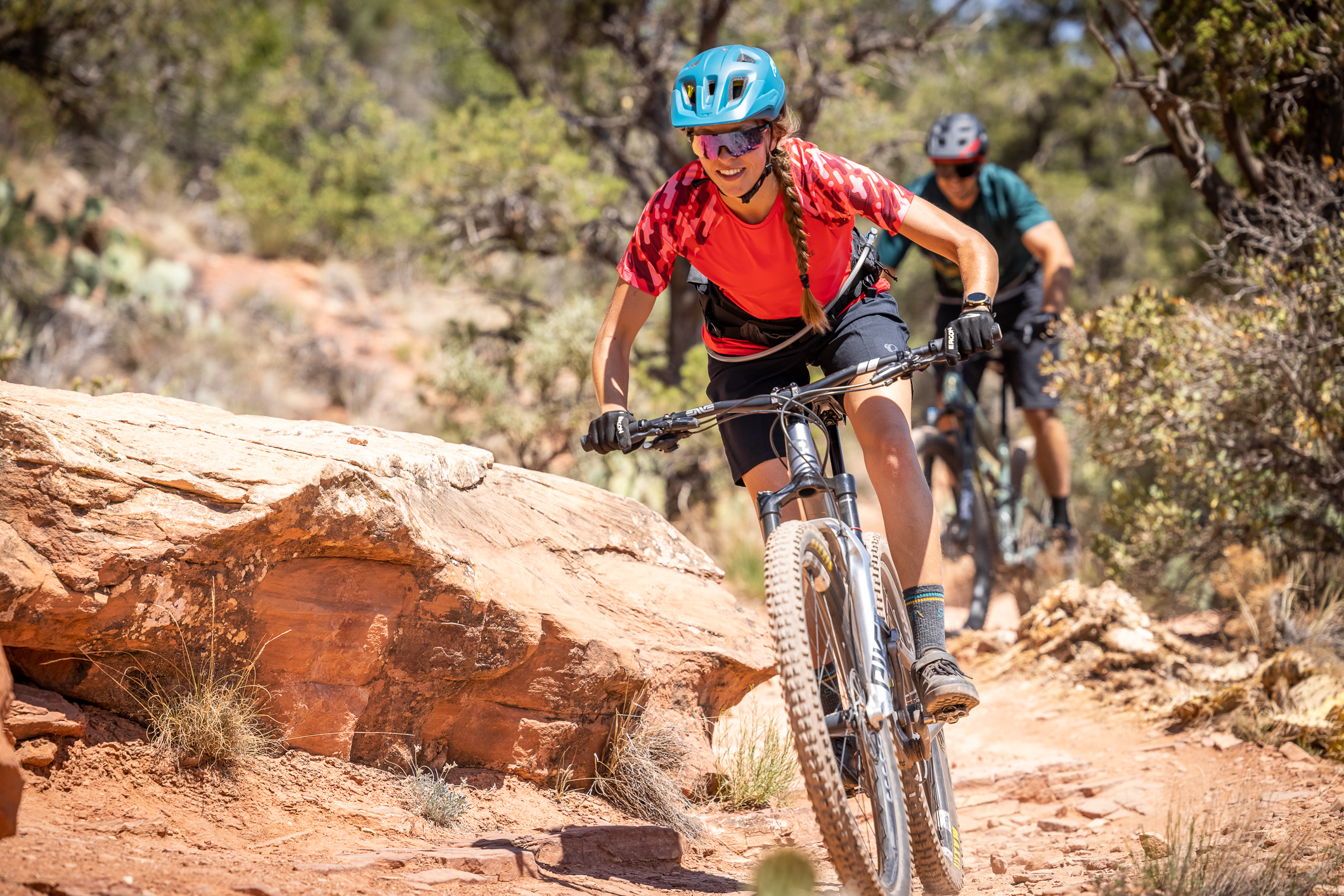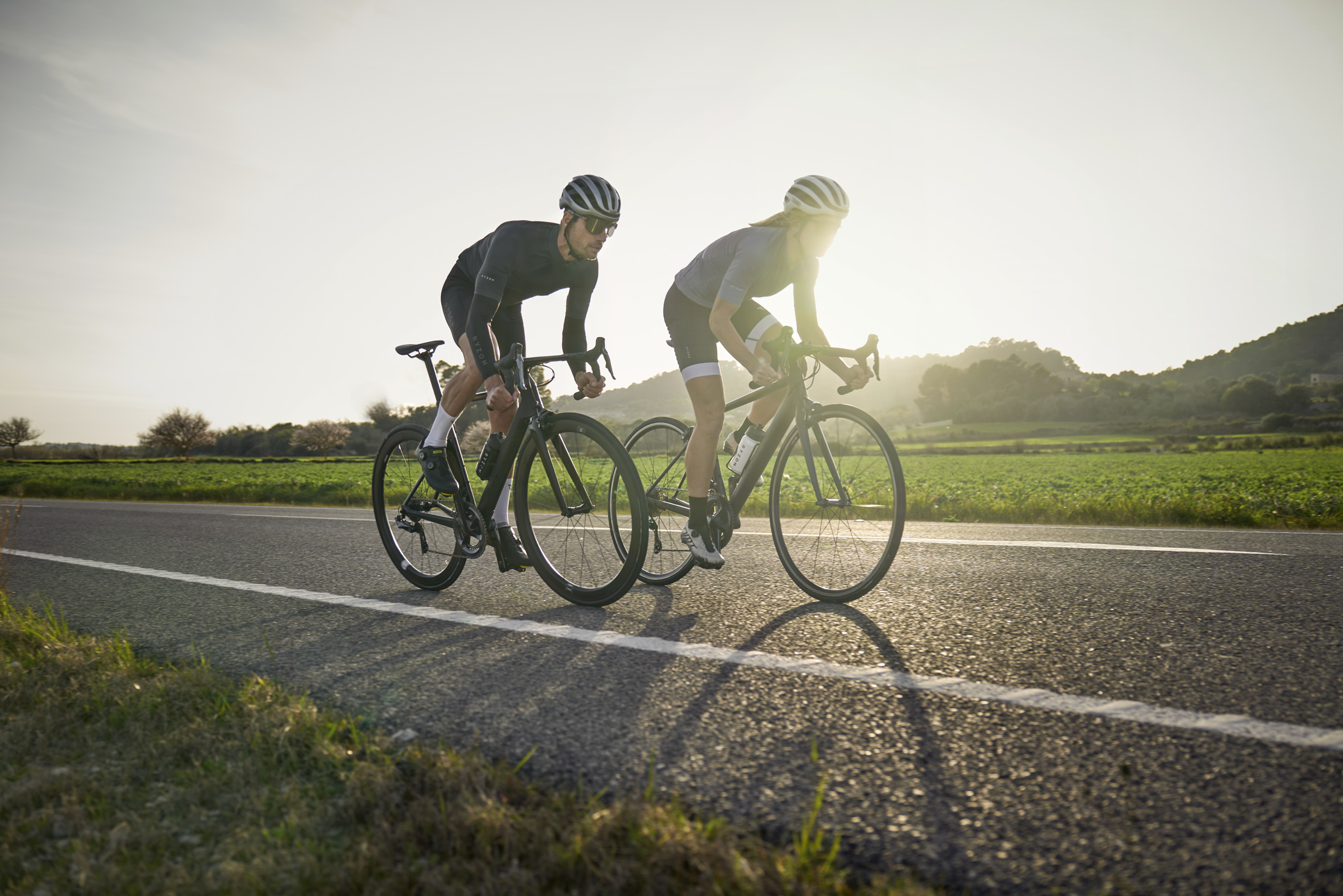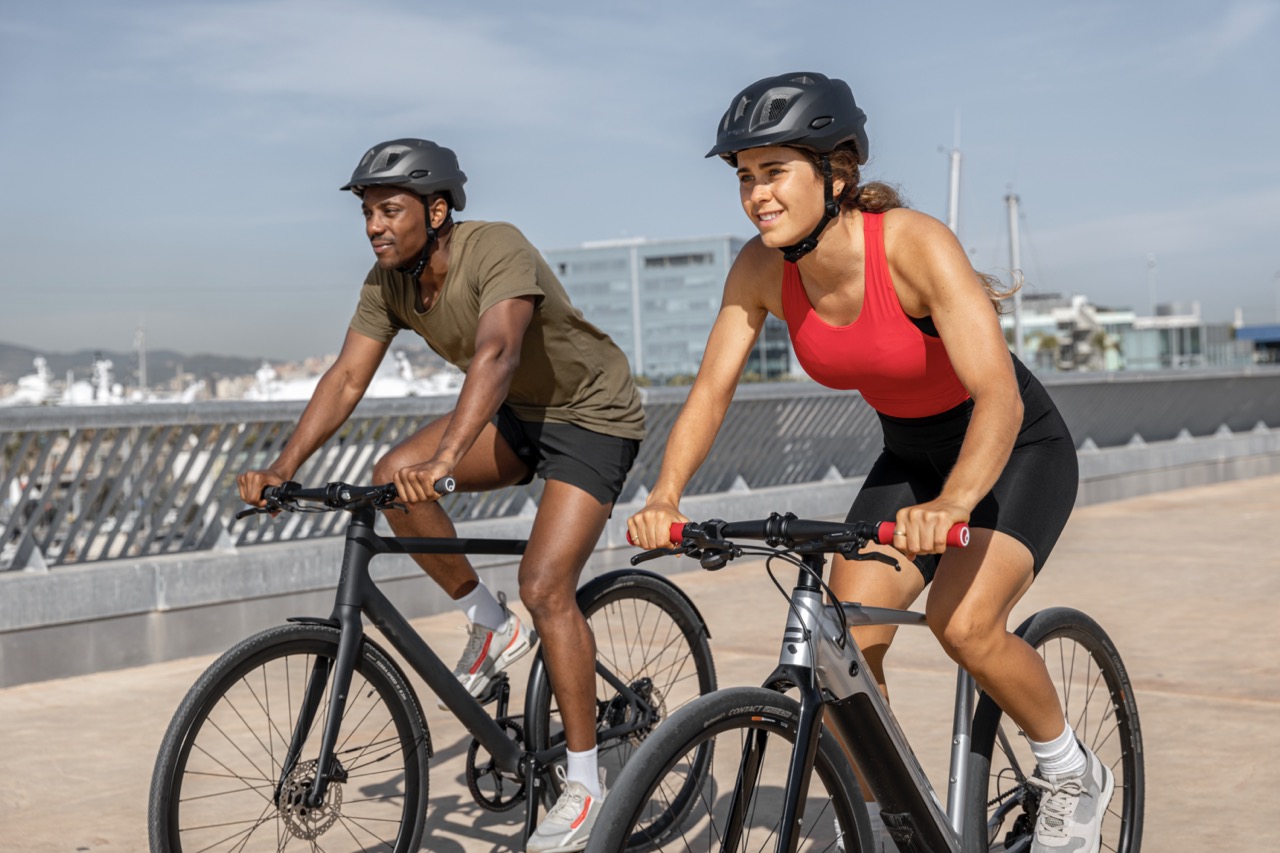Elbow Pain While Cycling – Causes and Remedies

Many cyclists complain about discomfort in the elbow. Here are the best expert tips to help you tackle it!
Elbow Pain While Cycling
When cycling causes pain in the knees, thighs, feet, or hips, it's understandable given the leg-focused nature of the sport. But pain in the elbows and forearms, which can radiate into the hands and shoulders, is harder to explain due to the relatively passive role of the arms on the bike. Still, the contribution of the arms to overall cycling performance shouldn't be underestimated. They don’t just grip the handlebars and constantly adjust direction and balance—they also act as highly effective shock absorbers, not only during intense off-road rides like mountain biking.
Can Elbow Pain Have Other Causes?
The elbow joint is essentially a hinge. Due to the rotation of the hands, it’s more accurately described as a pivot-hinge joint. The ability to rotate the forearm isn’t strictly part of the elbow but is a kind of auxiliary function that originates near the joint and is directly linked to pain symptoms. To pinpoint the cause of elbow pain specifically during cycling, it’s essential to first rule out everyday causes that only become noticeable during physical activity. For example, frequent use of a computer mouse, typing, or operating heavy tools like drills or jackhammers can lead to mechanical overload. Add the gripping strain and vibrations from cycling, and elbow problems may arise. Conditions like arthritis or other rheumatic diseases, and more rarely, bone or joint disorders such as osteoporosis or gout, can also manifest early in the elbow. Besides cycling, other sports are known to stress the tendon origins responsible for forearm rotation—tennis elbow and golfer’s elbow are prime examples.
The well-known tennis elbow could just as easily be called mountain bike elbow. This inflammation at the origin of the finger extensor muscles in the forearm is frequently diagnosed in cyclists. It’s painful but not seriously dangerous if treated promptly.

What Causes Chronic Elbow Pain While Cycling?
The elbow joint is moved by flexors (biceps femoris) and extensors (triceps femoris) in the upper arm. Since the flexor plays a minor role in cycling, issues rarely occur on that side of the joint. The triceps, however, bear all the support forces and channel them through the elbow into the forearm. Unlike the knee, the elbow lacks a patella. At the lower end of the triceps, a large bursa acts as a pivot point. Exposure to drafts or constant leaning on the elbows—like resting them on a desk—can inflame and enlarge this bursa. This is usually not caused by excessive cycling but rather by improper everyday movements.
Deeper within the joint, it’s the cartilage surfaces that can suffer from cycling, especially if riders keep their arms fully extended. Only a slightly bent elbow can act as a shock absorber, similar to standing out of the saddle when riding over obstacles. When fully extended, with the forearm and upper arm bones aligned vertically, shocks from the handlebars travel directly to the neck, back, and elbow joint.
Never fully extending your elbows while cycling is one of the key principles for healthy, pain-free riding—even if the posture seems more comfortable or energy-saving.
In addition to maintaining a “ready-to-absorb” bent arm position, proactive riding can help protect the elbows from harsh impacts and resulting pain. Spotting potholes, roots, or curbs early and adjusting your riding accordingly is more important than mastering the technique to overcome them. Ideally, shift your weight slightly toward the saddle just before the front wheel makes contact and consciously relax the triceps muscle, as if gently catching the handlebars like a ball. The more aggressive the riding position and the more challenging the obstacle, the softer your arms should be. Of course, your hands shouldn’t collapse into your torso; instead, the impact should be gradually absorbed.
From Bumps to Vibrations
Overextension of the elbows is most likely caused by poor bike geometry or incorrect setup. Improper handlebar height or width, non-ergonomic grips, and poorly positioned brake levers can all strain the elbows. Our expert offers recommendations below. But what exactly happens in the forearm, and why does it mainly affect the elbow?
The issue lies in the combination of tension in the elbow’s muscle origins and vibration, especially when the wrist is constantly held in an unnatural pronated position on the handlebars. Pronation refers to rotating the forearm so the palms face downward. In this position, the muscles that extend the fingers and pull the wrist toward the back of the hand wrap diagonally around the radius and ulna, creating tension. Their upper origin point, called the epicondylus lateralis, is the bony tip on the outer side of the elbow. Constant stress and vibration from the handlebars cause the tendon origin to rub against this exposed bone, leading to inflammation and irritation. The same can theoretically happen to the finger flexors on the underside of the forearm and the inner epicondylus medialis, but this is much rarer. A delayed consequence could be what's known as “arm pump”—a painful effect in the forearm muscles when they work so hard against handlebar shocks that internal pressure restricts blood flow. It feels like a cramp, but the root cause is pressure against the fascia surrounding the hand and finger muscles.

What Can I Do About Elbow Pain?
Since road irregularities and handlebar vibrations can’t be eliminated, it’s essential to proactively—and especially if you’re already experiencing elbow pain—focus on relieving the affected structures both on and off the bike. Avoid leaning on your forearms and minimize working with palms facing downward, which is especially difficult at a desk job.
On the bike, ergonomic hardware and an optimal riding position are key to relieving the elbows, particularly the epicondyles. Here are some options:
Correct Handlebar Reach: Frame length, stem length, and handlebar shape determine the distance between the grips and the rider. If you're experiencing elbow pain, this distance is often too great, causing you to ride with your arms fully extended. You can easily find the ideal setup without an expensive specialist using the Ergon Fitting Box. It also helps identify handlebars that are set too high or too low.

Avoid Static Load: One major issue for elbows is prolonged strain in the same position. On long rides, it's helpful to regularly change the angle of your elbows and the rotation of your forearms. A hand position with thumbs pointing upward or forward—like on bar ends or drop bar brake levers—is more natural. Ergonomic grips with integrated bar ends offer relief on flat bars. These don’t need to be long; different lengths and shapes provide more grip options. Ergon grips can even be used in the transition zones between horizontal and angled grip areas. Our recommendation: Ergon GT series for touring cyclists, GP series for broader grip surfaces, and GS series for mountain bikers. The Ergon Gripselector helps with choosing the right model.

Reduce Mechanical Stress: In addition to your arms acting as shock absorbers and possibly using suspension forks, grips, or handlebar tape can help dampen vibrations.
Drop bar riders can use thicker or double-wrapped tape, or better yet, place Ergon BT OrthoCell Pad Sets on the contact areas. An innovation is the first grip tape made from orthopedic OrthoCell® foam, which offers excellent support and damping properties. Also, the stiffest handlebar-stem combo might not be ideal—some setups absorb minor impacts better depending on the type.
For flat bars, we recommend grips with a cushioned top surface that aren’t soft all around, as pulling from the underside requires firmness. Fully soft grips can make bike control harder. Balanced options include Ergon’s GA, GE, GD, and GFR lines. Bar ends are now also available with rubberized surfaces.

Ride Proactively and Position Elbows Ergonomically: Anticipating impacts and consciously absorbing front wheel shocks by unloading the handlebars at the right moment is key. Elbows should be positioned outward—not backward—when using flat bars or the tops of drop/gravel bars. When gripping bar ends, brake levers, or the drops, it’s the opposite. A good rule of thumb: elbows should point roughly in the opposite direction of your extended thumbs and always be at least slightly bent.

Avoid New Gear Before a Bike Trip: If you're planning a long ride, don’t switch to new gear or change your riding position right before the trip. Without time to adapt, muscles can cramp and joints may become irritated or inflamed, even leading to numbness. This applies not only to elbows but also to the neck, seat area, back, knees, and hips.

Brake Lever Positioning: Especially important for mountain biking and touring: brake levers are often aligned horizontally with the handlebars, which forces the wrists into an upward angle—this is not ideal. Fingers and forearms should form a straight line when reaching for the levers. The Ergon Fitting Box includes a tool and detailed instructions for this setup.

How to Treat a Painful Elbow
In most cases, elbow pain stems from inflammatory overuse of muscle origins—like the well-known tennis elbow. If wiping across a flat surface causes pain on the outer elbow, that’s a clear sign. While it’s tempting to take medication, this should always be discussed with a doctor. Often, rest and reducing strain already work wonders.
To prevent the pain from returning after a break, you should carefully check your riding position and do light strength exercises for gripping and forearm rotation. Here are two examples:
- Forearm Rotation Exercise:
Tie a small weight (up to 2 kg) to a string. Place the weight to the left of a table and run the string across the tabletop. Tie a loop at the end and hook your right thumb into it. Move your hand to the right until the weight hangs freely. Rotate your forearm to the right until the back of your hand lies flat. This movement lifts the weight. Repeat until your forearm burns, then switch sides. - Wrist Roller Exercise:
Attach a 1.5-meter string to the center of a stick so it wraps around when rotated. Tie a small weight (0.5–5 kg, depending on your strength) to the other end. Hold the stick shoulder-width with both hands and arms extended in front of you. Rotate the stick by alternately gripping and turning it to wind up the string and lift the weight. Roll the string up and down several times in both directions.